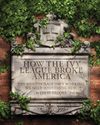
Viewed benignly, the encyclopedic art museum is a great public library of things, illuminating the brilliant variety and shared impulses of our species, and promoting intercultural understanding and admiration. Viewed less benignly, it has been cast as the well-spoken child of imperialist shopaholics and kleptomaniacs who appropriated the art of other people to tell flattering tales about themselves.
Museums have long contested this characterization on grounds both pragmatic (their ability to protect and care for the world's treasures) and high-minded-the belief that convening things from everywhere enables them to tell a sweeping, global story about what it is to be human. The 2002 "Declaration on the Importance and Value of Universal Museums," signed by the directors of 18 world-famous institutions, put the claim succinctly: “Museums serve not just the citizens of one nation but the people of every nation.” It’s a fine sentiment, but the fact that every one of those 18 museums is in Europe or North America raises obvious questions about just how those peoples of other nations are being served. This geographic lopsidedness has led critics to challenge not only the museums’ rights to the objects in their care, but also the histories those objects have been arranged to illustrate.
This story is from the March 2024 edition of The Atlantic.
Start your 7-day Magzter GOLD free trial to access thousands of curated premium stories, and 9,000+ magazines and newspapers.
Already a subscriber ? Sign In
This story is from the March 2024 edition of The Atlantic.
Start your 7-day Magzter GOLD free trial to access thousands of curated premium stories, and 9,000+ magazines and newspapers.
Already a subscriber? Sign In

The Dark Origins of Impressionism
How the violence and deprivation of war inspired light-filled masterpieces

The Magic Mountain Saved My Life
When I was young and adrift, Thomas Manns novel gave me a sense of purpose. Today, its vision is startlingly relevant.

The Weirdest Hit in History
How Handel's Messiah became Western music's first classic

Culture Critics
Nick Cave Wants to Be Good \"I was just a nasty little guy.\"

ONE FOR THE ROAD
What I ate growing up with the Grateful Dead

Teaching Lucy
She was a superstar of American education. Then she was blamed for the country's literacy crisis. Can Lucy Calkins reclaim her good name?

A BOXER ON DEATH ROW
Iwao Hakamada spent an unprecedented five decades awaiting execution. Each day he woke up unsure whether it would be his last.

HOW THE IVY LEAGUE BROKE AMERICA
THE MERITOCRACY ISN'T WORKING. WE NEED SOMETHING NEW.

Against Type
How Jimmy O Yang became a main character

DISPATCHES
HOW TO BUILD A PALESTINIAN STATE There's still a way.